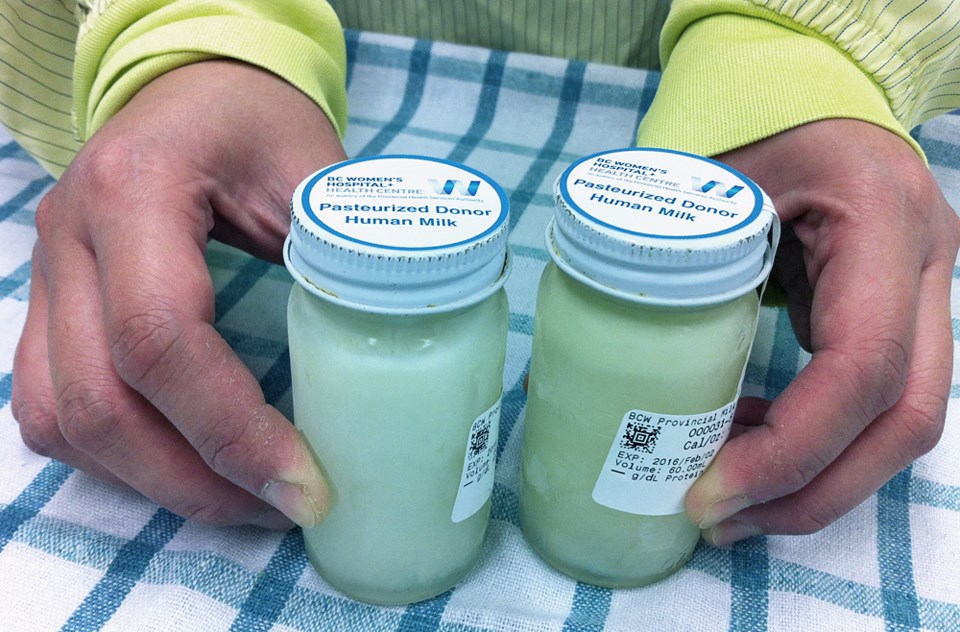A veritable wave of human milk is flowing from breasts in the Fraser Health Authority to pasteurizers at the B.C. Women’s Provincial Milk Bank and back into the mouths of fragile premature babies at New Westminster’s Royal Columbian Hospital, thanks to a new partnership that straddles health authority boundaries.
The whole process starts when a Fraser Health mom who has given birth within the last year hears about breast milk donation.
“I think I just Googled it,” says Olive Kung, who was at the New Westminster public health unit recently to drop off her first batch of frozen milk (nearly four litres).
A mother of two, she says she first considered milk donation (and even froze a bit of the life-giving fluid) when her first baby had trouble latching and some of her milk was squandered.
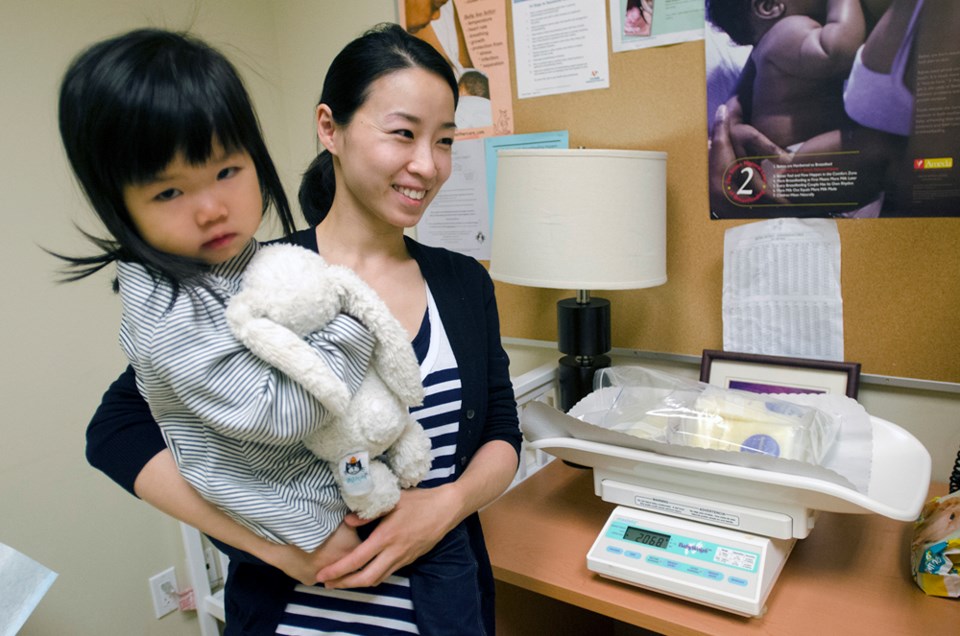
“I have a strong letdown and lots of milk, and I always thought it was a waste,” she says.
To her, the value of that spilled milk was driven home by a story about her mom as a baby in Hong Kong.
Her mother’s mother had been ill and unable to breastfeed her baby or afford formula, so a neighbour had stepped in with her own milk to feed the infant who would become Kung’s mom.
“I thought maybe I can help some other babies,” Kung says.
A new partnership
One group of babies who need a lot of help are the fragile infants in the Fraser Health Authority’s level 3 neonatal intensive care units (NICUs) at RCH and Surrey Memorial.
About two years ago, the milk bank approached the health authority about getting more donated milk to those tiny patients.
The NICUs had used milk from the bank on a hit-and-miss basis in the past, but the milk bank thought they could do better.
“It is definitely the standard of care,” milk bank coordinator Frances Jones told the Record. “The literature is very clear. If you can’t give mother’s milk, especially in the NICU, then you should be providing pasteurized donor milk.”
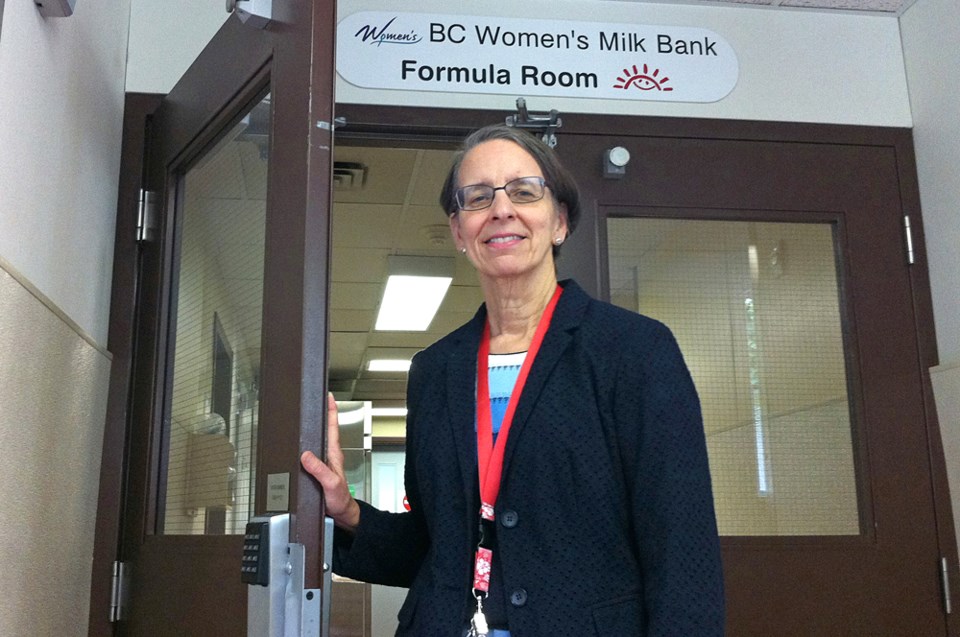
The milk bank said it could ship a steady supply to the two NICUs if the health authority agreed to help promote breast milk donation and set up depots at its public health units for donors to drop off their milk.
The milk bank suggested Fraser Health open nine such depots; the health authority opened 17 – one at each of its public health units.
“They’re superstars,” Jones said.
The trickle of milk that had come from Fraser Health in the past grew to a flood.
In 2012, it collected 97 litres; last year, it collected 1,700.
The milk coming back to RCH and Surrey Memorial hasn’t been quite as plentiful – about 200 60-millilitre bottles per month – but Jones said the milk bank is getting ready to up that to 400 bottles.
The first-of-its-kind partnership was formalized in April with a memorandum of understanding signed by the ministry of health, Fraser Health and the Provincial Health Services Authority, which oversees B.C. Women’s Hospital and the milk bank.
Under the agreement, the bank takes care of screening and processing while Fraser Health collects the milk and pays for shipping.
“Terrific women”
Before donating milk, Kung was screened much like a blood donor – filling out forms, undergoing blood tests – and started collecting and storing her milk in freezer bags at the beginning of June.
She gets up at 3 a.m. every morning.
If her four-month-old son doesn’t need the milk her body’s produced, she pumps it off. If he does, she pumps first thing in the morning.
“They really are terrific women,” says Jones of donor moms like Kung, “because they’re doing all this work for babies they’ll never see. It really is such a wonderful gift because it makes such a huge difference, particularly to our NICU babies.”
Kung’s picnic cooler of frozen milk is weighed, labelled, and added to the bounty already in the New West clinic’s freezer.
When that freezer is about a quarter full with donations from the depot’s four current registered donors, Kung’s donation will be shipped to the milk bank via overnight courier.
“We track every detail”
The B.C. Women’s Provincial Milk Bank looks a lot like an industrial kitchen, crammed with an array of stainless steel appliances.
Still a little cramped on the ground floor of the old Shaugnessy building, the bank’s current setup is actually a big improvement over its previous configuration, with more space, a walk-in freezer, a computerized scanning system and more staff, thanks to $650,000 in provincial funding in spring 2013.
Milk bank technicians Lalaine Carag and Merlyn
Hervas, swathed in surgical gowns and hair nets, hover over a cart, topped with little glass bottles, a large stainless-steel pot and two stainless steel pitchers.
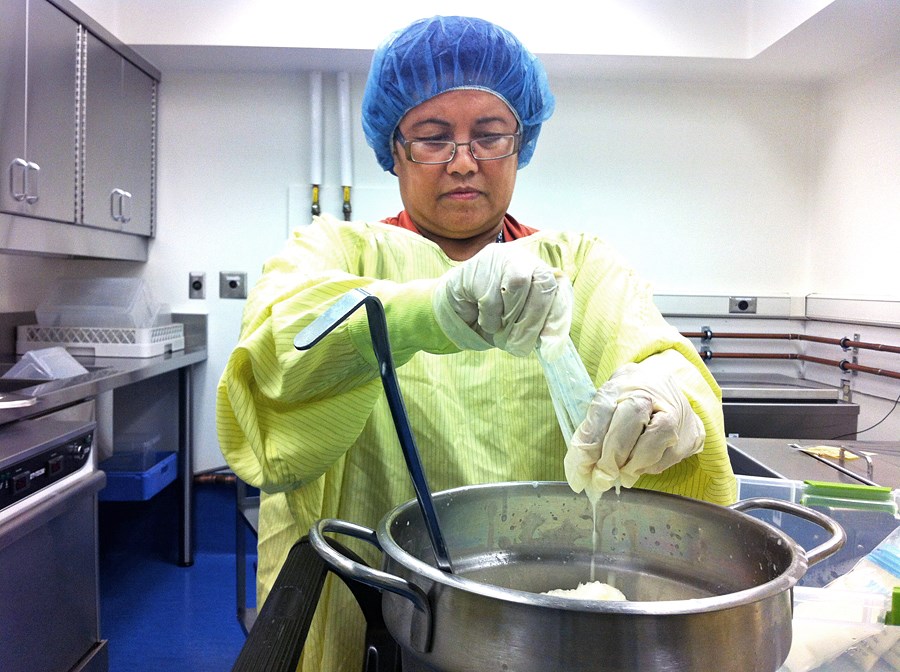
Like so many freezies, Hervas empties the contents of partially thawed freezer bags into the pot.
She ladles the thawed milk into the pitchers through a sieve.
“We pool four donors together because that optimizes the fat and protein and all of that that’s in the milk,” Jones says. “It just kind of evens it out.”
Hervas pours the thawed milk into the bottles, which Carag then caps and places in metal racks, ready for one of the bank’s British-designed human-milk pasteurizers, which will heat the milk to 62.5 C for 30 minutes before chilling it to 4 C.
The milk is then labelled, sealed and placed in a holding freezer while a sample is sent to the lab and tested.
Once a batch is cleared, it’s placed in a different freezer, ready for shipping.
Every step along the way is tracked – just in case, says Jones.
“If a baby was to become ill, we would have to track from the baby right back to the donors and we’d have to know every child that got that batch of milk and every donor whose milk was in the batch,” Jones says. “We’d also have to look at all our processing, so, did the temperature go to the right temperature for the right length of time? How long was it sitting out of the fridge? We track every detail.”
“Very grateful”
Little Kamila weighs just over two-and-quarter pounds.
That doesn’t sound like a lot, but it’s nearly twice the weight she was when she first arrived at Royal Columbian’s NICU on Aug. 28.
Her mom had just had an emergency C-section after 12 days of bed rest.
“I managed to hold her in for 12 days,” says Kathy, who did not want to use her full name because she had not even made her pregnancy public before her ordeal began.
Now a mother of two, Kathy says her first daughter’s birth was “the easiest” you could imagine.
Not so with Kamila.
“It was a shock,” Kathy says. “It’s been just a roller coaster of emotions.”
Her oldest daughter had had all the benefits of mother’s milk when she was born, and Kathy wanted Kamila to have the same, but her milk was slow to come in.
When the NICU staff asked her if she’d like Kamila to be fed pasteurized donor milk, she said she had “no hesitation.”
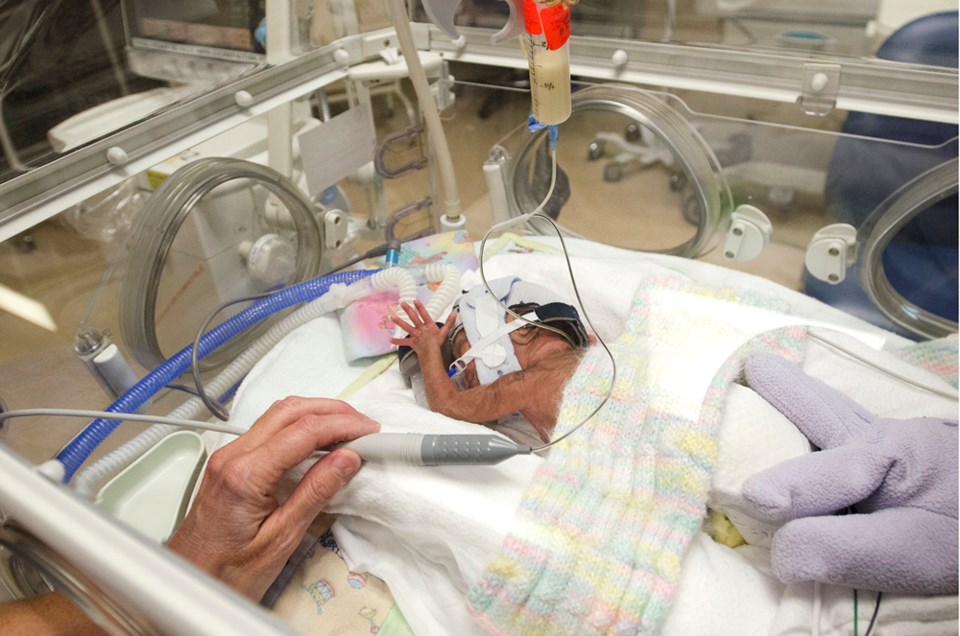
“The donated breast milk was amazing to me,” she says. “I didn’t even think that was an option. This is all new to me, the NICU and this whole experience, so I was very grateful for that.”
Kathy started producing milk about a day and a half after Kamila was born and now supplies all she needs.
But two months ago, when she still weighed little more than a pound, Kamila’s first few drops had had to find their way from a stranger’s breast, to a public health depot, to the milk bank and finally here to Royal Columbian Hospital to feed her tiny body.
“It’s incredible that we even have this amazing option to nourish our babies from another mother,” Kathy says.
For more information about becoming a breastmilk donor, visit bcwomensmilkbank.ca.
